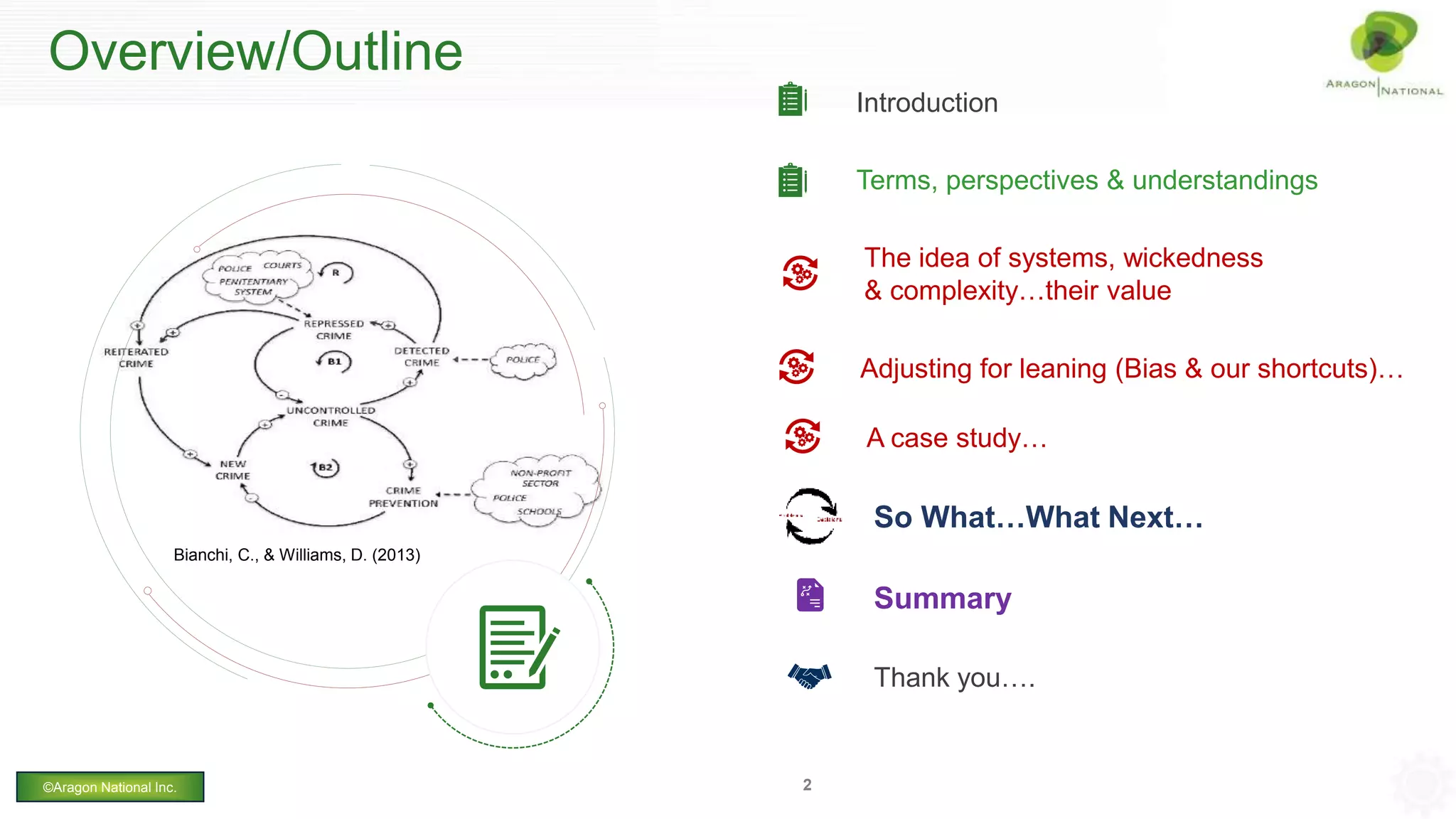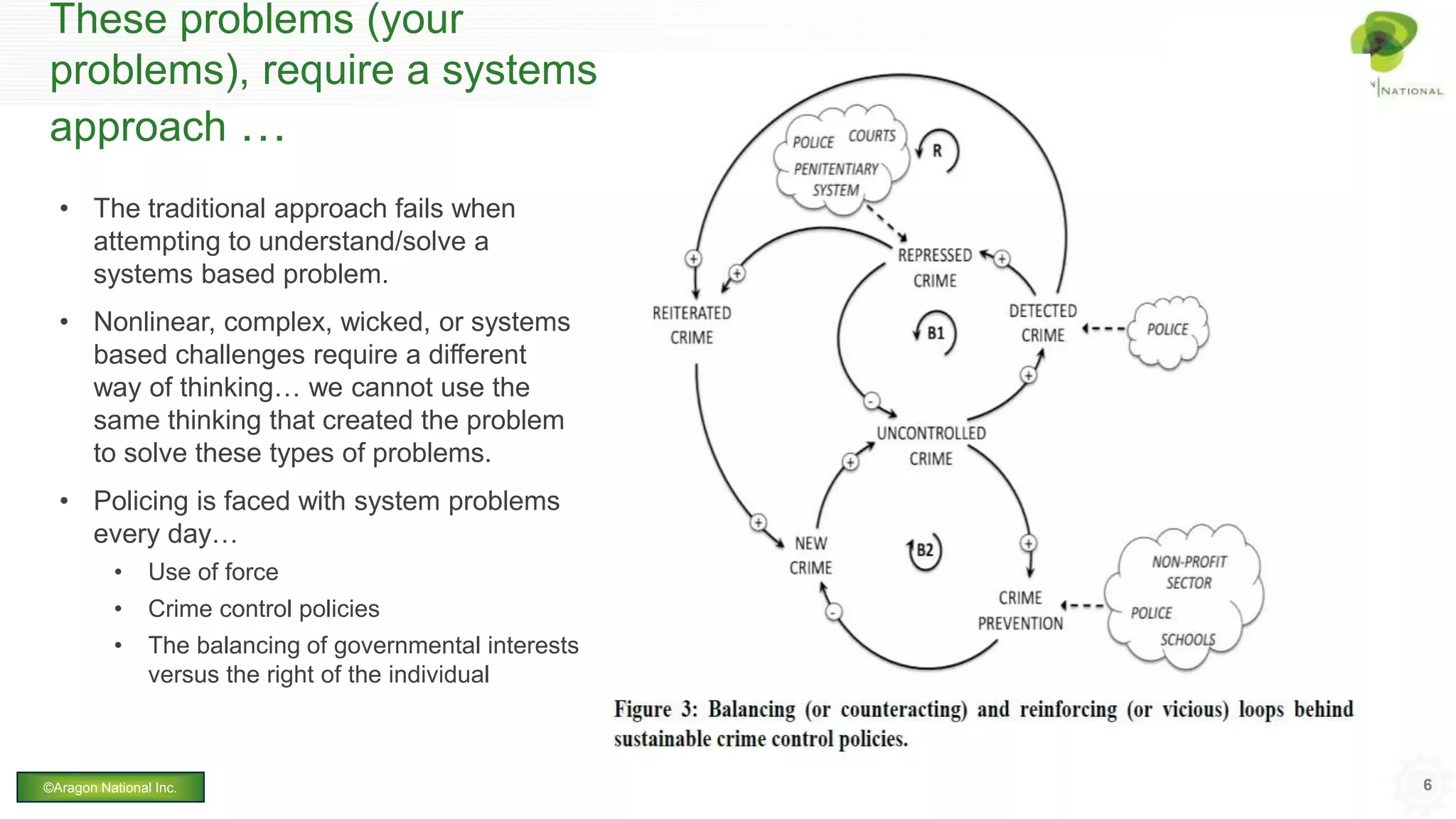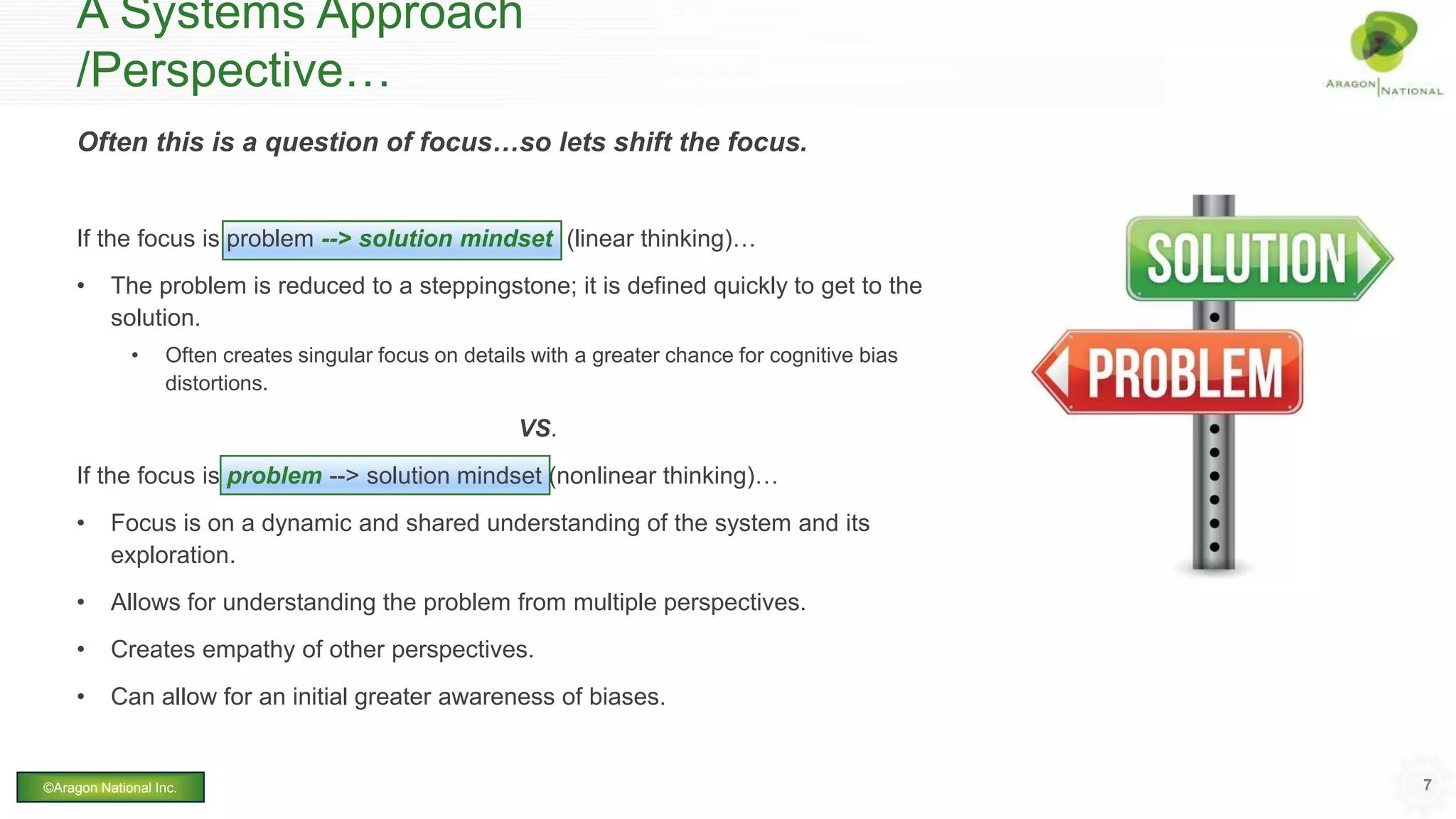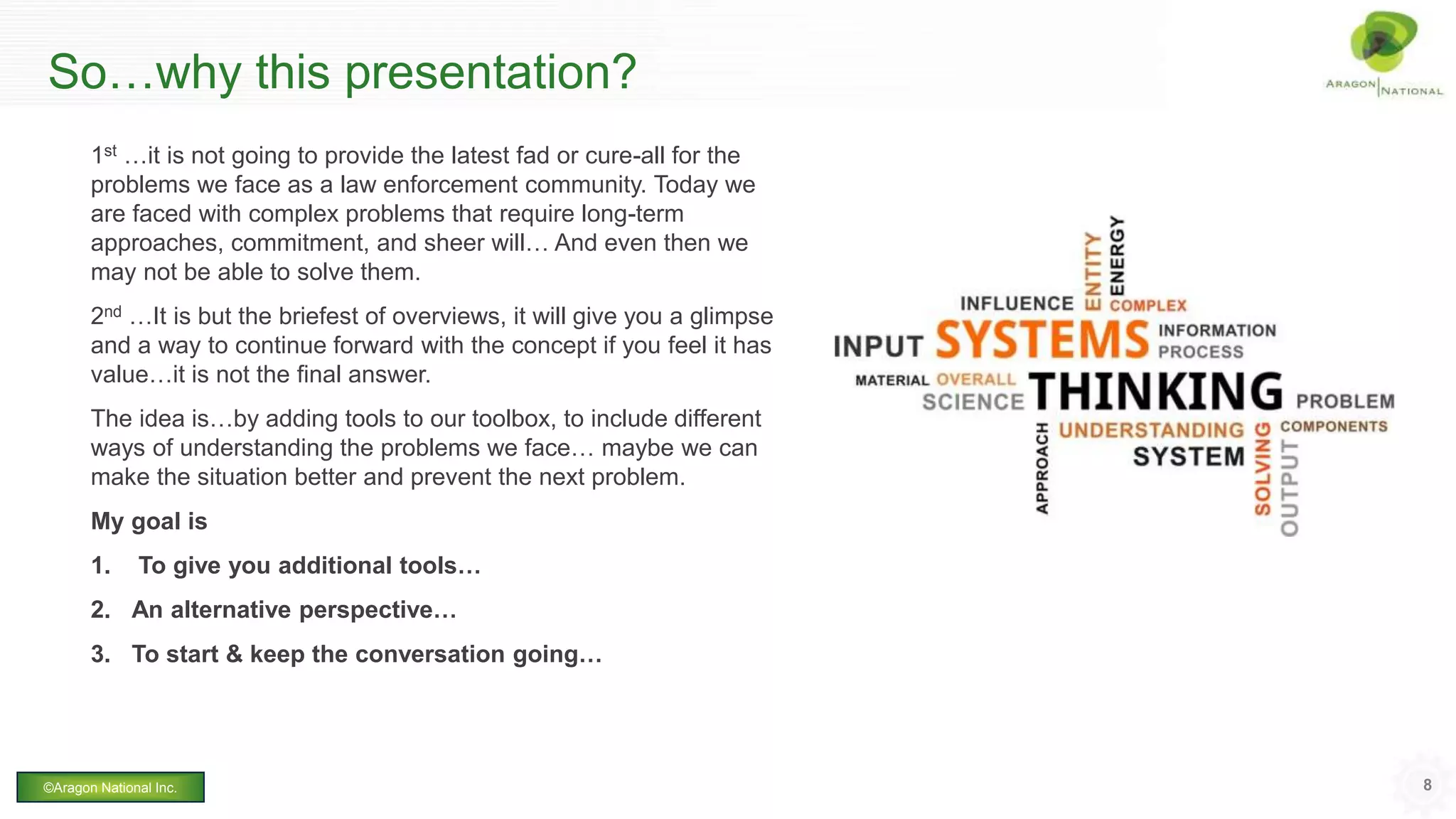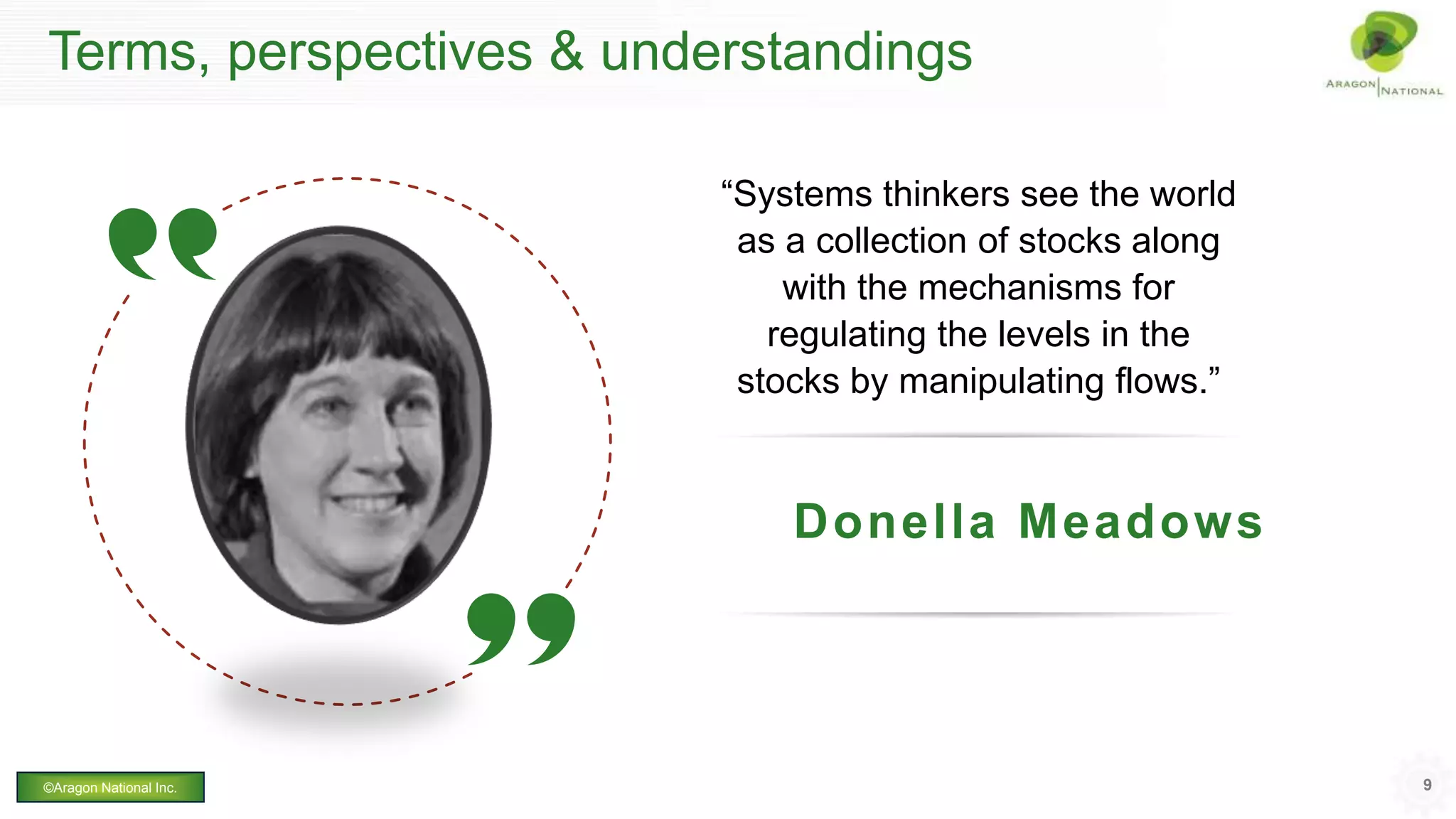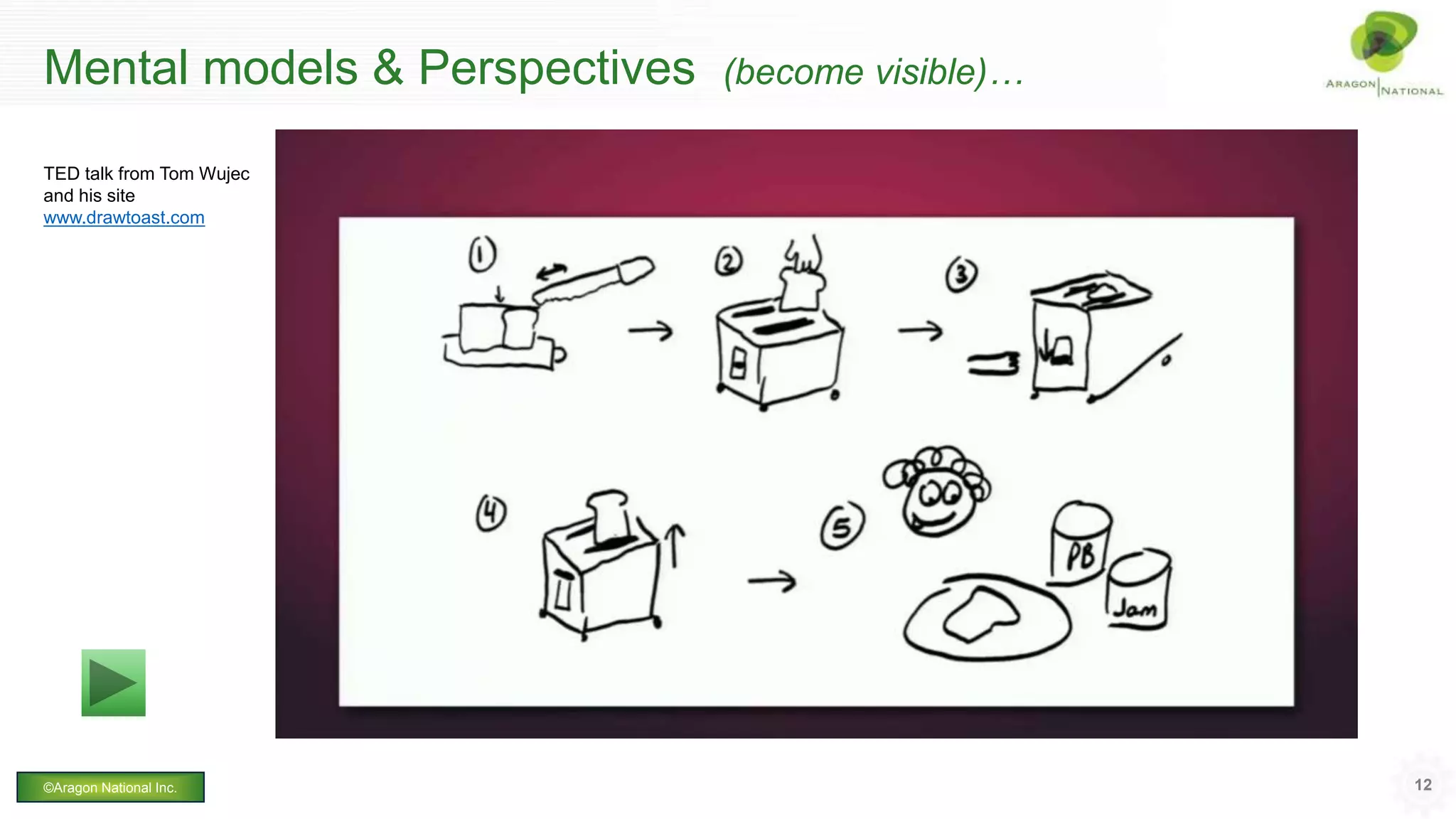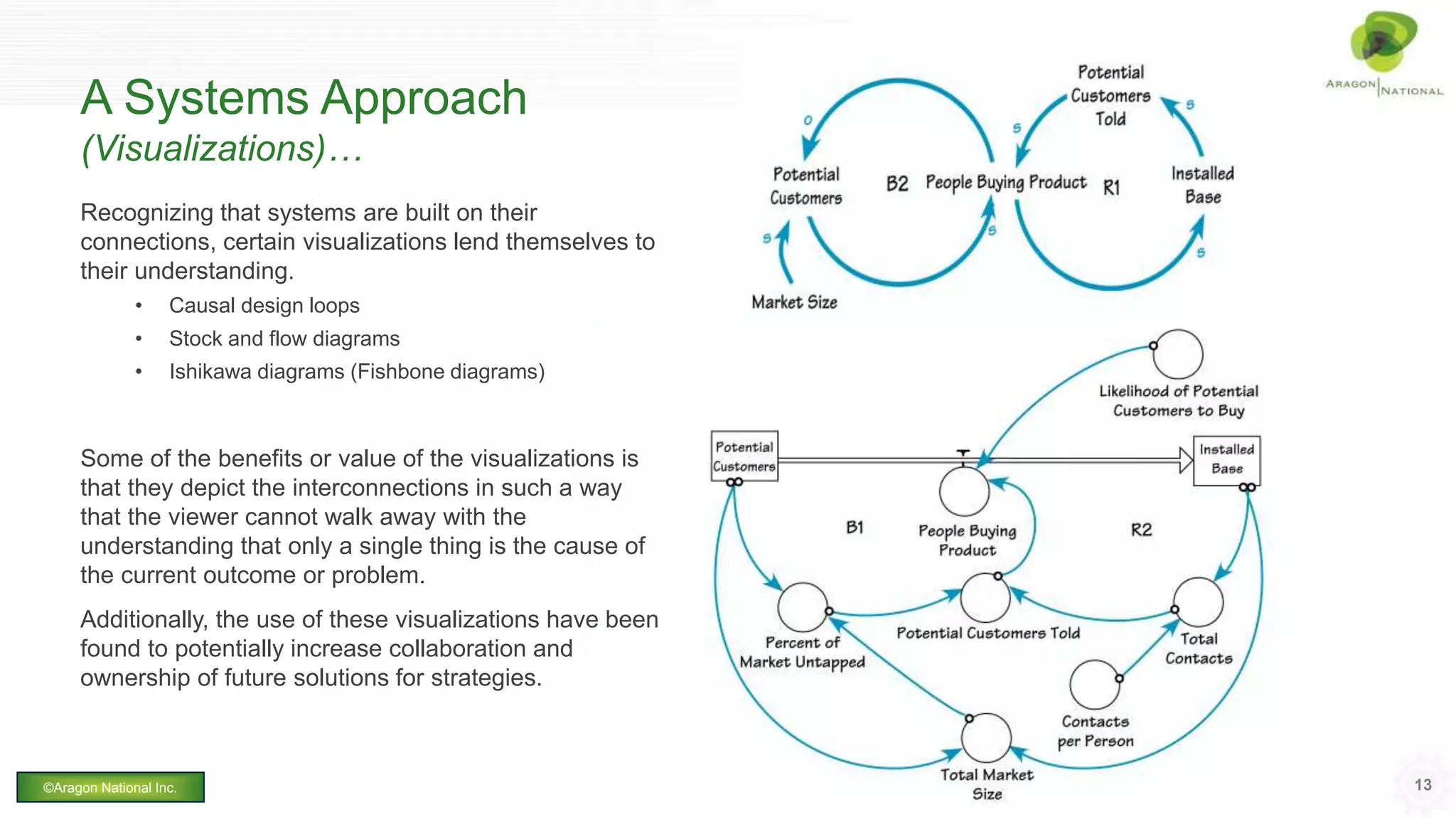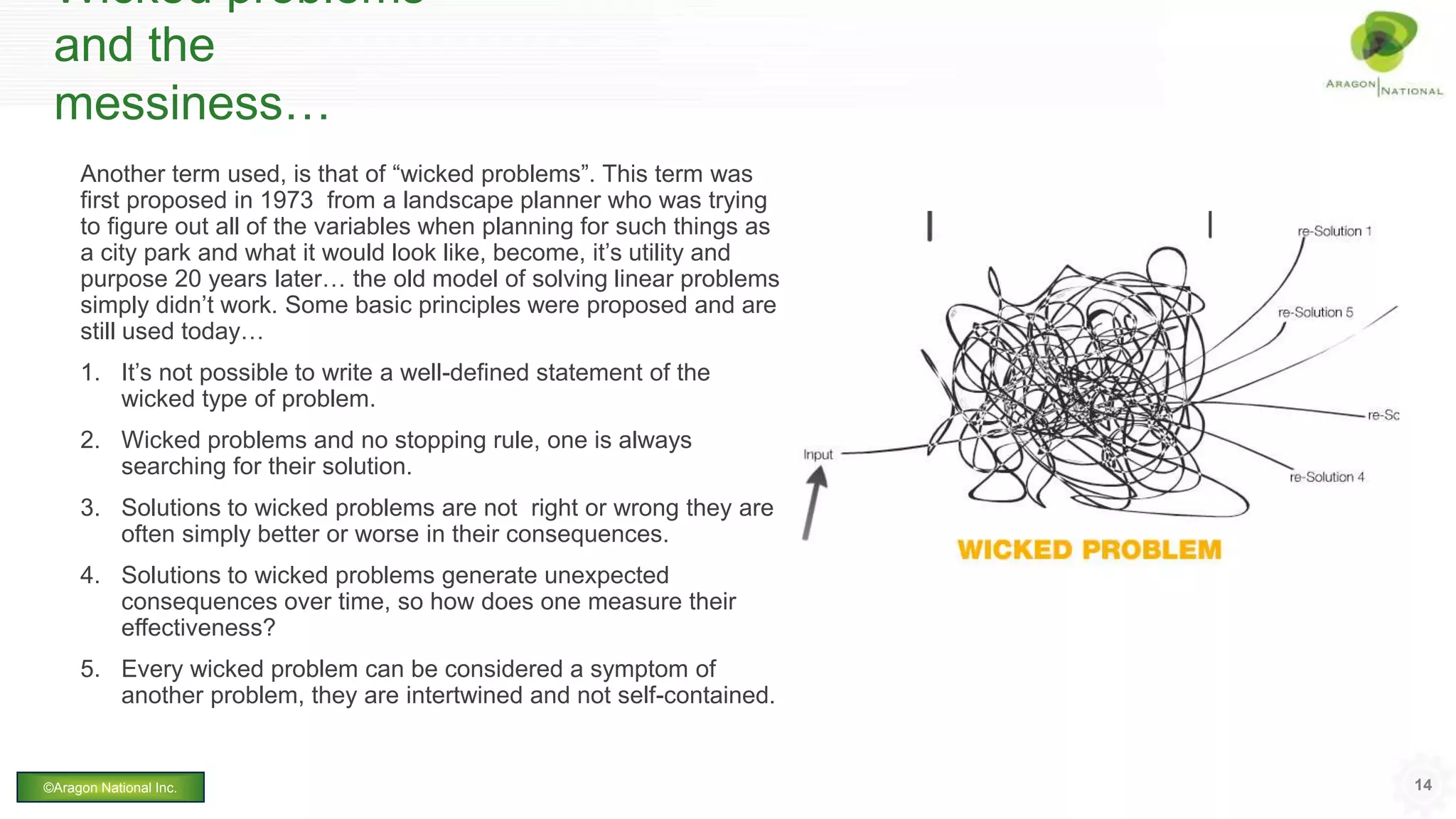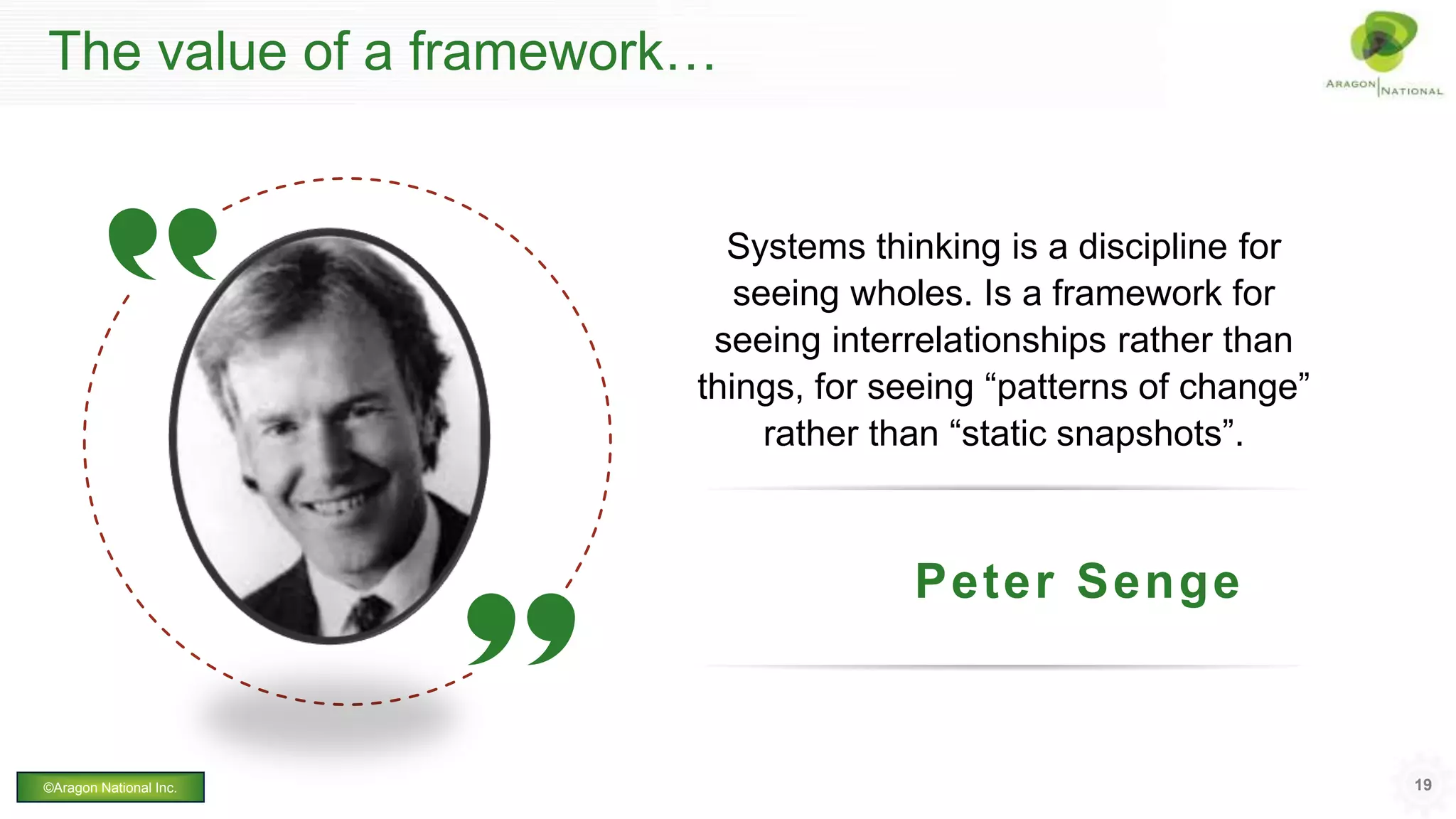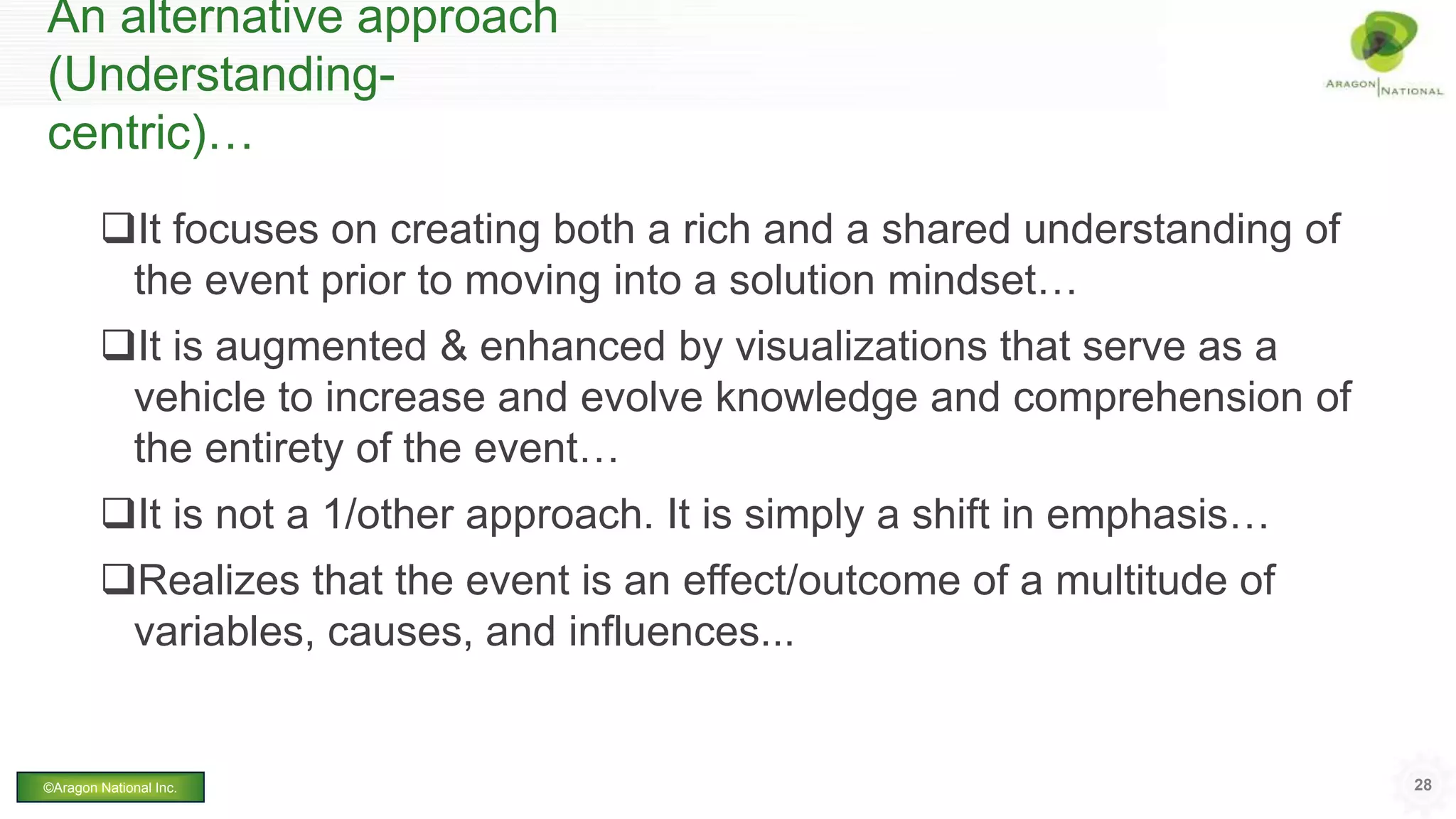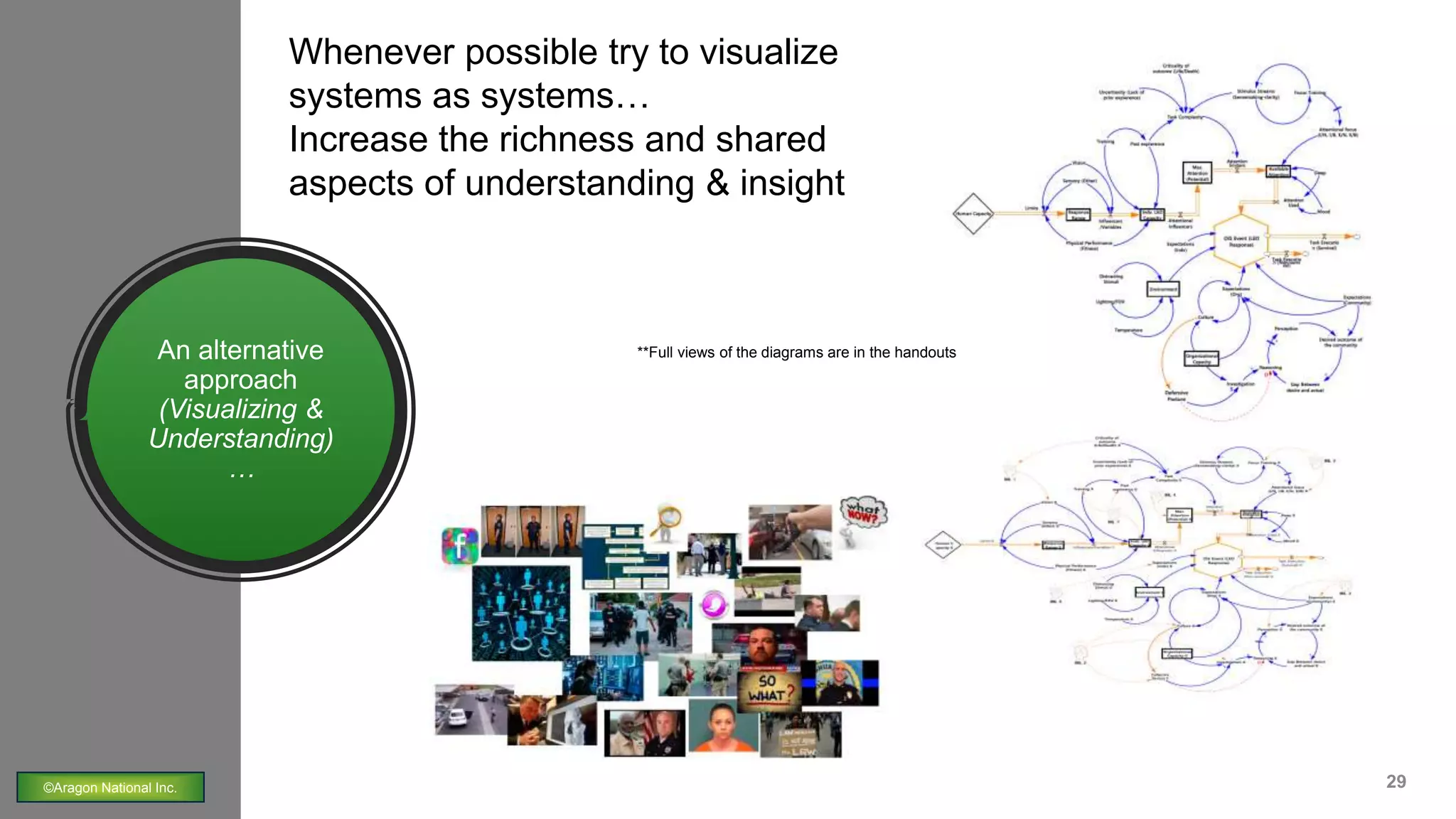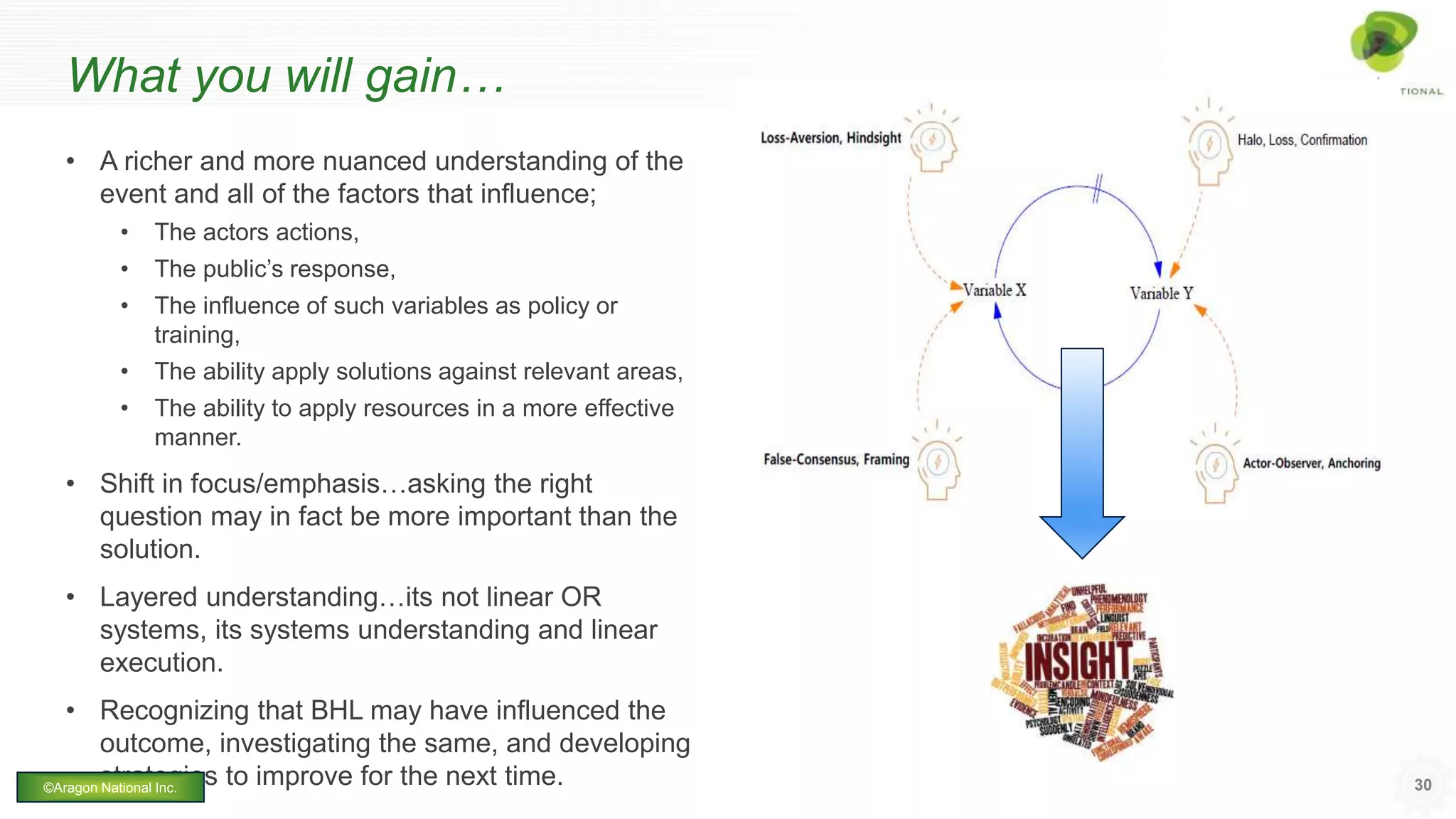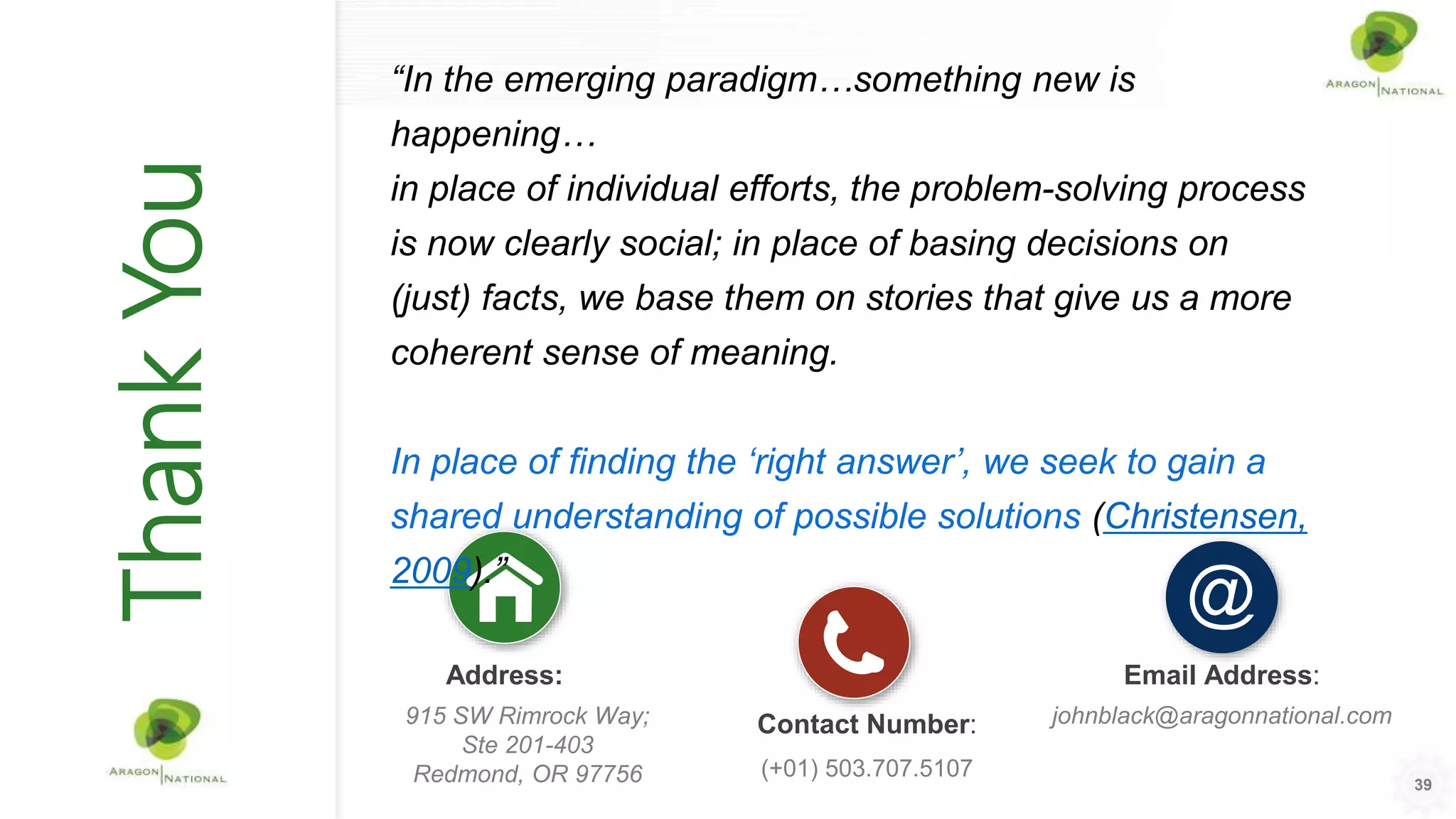This document provides an overview of a presentation on systems thinking and complexity as applied to policing. It discusses how policing deals with "wicked problems" and complexity on a daily basis. It encourages shifting from a problem-solution mindset to understanding the system as a whole before determining solutions. The document presents various concepts including systems thinking, bias, heuristics, limits, and case studies to illustrate how visualizing systems and understanding all influencing factors can provide a richer perspective for determining effective strategies and solutions. The key messages are to seek diverse perspectives, think critically, be aware of biases, and welcome exploring problems as complex systems rather than isolated issues.

